- Home
- P. T. Deutermann
Trial by Fire Page 3
Trial by Fire Read online
Page 3
“Up on the flight deck, yeah, that’s the way it is. But this baby’s got two high-pressure foam heads mounted in each bay. They’re mounted down on the actual hangar deck; one points forward, one points aft. You’d only use ’em as a last resort. Each nozzle has a two-hundred-gallon concentrate tank built into a bulkhead. These controls right here open the valve between the nozzles and the tank; these right here open gate valves to the fire main, which then pressurizes the tank and makes foam.”
“Wow,” J.R. said. “This is pretty amazing stuff.”
“It is,” Hanlon acknowledged. “But you gotta understand, Lieutenant, all this new shit right here? It involved a lot of new cabling and piping. Like I said, we can give you the plans for the various installations, but some poor sumbitch’s gonna have to go hand over hand to make sure the actual installation matches the plans. You know how that goes.”
“Yes, I surely do,” J.R. said. He knew that, although highly trained naval architects designed the routes for the miles and miles of electrical wiring and piping in a ship of this size, the actual shipfitters—the yard workers who manhandled piping and heavy cables into position—would often encounter obstacles not shown on the ship’s plans. They would then reroute whatever system they were installing to make it all work. He was beginning to appreciate the sheer magnitude of recording all this. All the damage control plans and blueprints down in the Engineering Log Room were original-configuration, pre-kamikaze vintage. Dismayed, he realized he was going to need help, and that he’d need officers to do it.
“We’re not done yet, there, Lieutenant,” Hanlon said with a sympathetic smile. “There’s more. Lots more.”
“Great,” J.R. said, shaking his head. “Just great.”
An hour later, he made his way down to the engineering department’s main office, called the Engineering Log Room. J.R. was a relatively junior member of the engineering department, which was headed up by Lieutenant Commander Forrest. His title was chief engineer, sometimes spoken as “cheng.” Following the Navy’s tradition of abbreviating absolutely everything, the rest of the department consisted of the main propulsion assistant, or MPA, the damage control assistant, or DCA, the repair officer, and the auxiliaries and electrical officer, or A & E, who were all senior lieutenants. J.R. was on the third tier of the chart, as assistant DCA and fire marshal. It was a long way from Havana, Illinois, where the most complex machine was one of the newfangled combine harvesters. His father, having watched the boom-and-bust cycle of agriculture beat down the actual farmers, had built a grain elevator at the edge of town. However the harvest came out, the farmers always needed a place to put it. By the time J.R. had gone off to a year at college and then the Academy, that single elevator had grown into six, making his father one of the wealthiest men in the county.
Franklin had six main engineering spaces: four boiler rooms, called firerooms, and two main engine rooms, which combined to drive four propellers. There was additionally an auxiliary machinery space at either end of the main spaces. The main propulsion plant produced 150,000 shaft horsepower, which could drive the huge ship at a speed of thirty-three knots, or almost forty miles per hour. Additionally there were four turbo-generators and two emergency diesel generators, two distilling plants that made desalinated fresh water out of seawater, fuel tanks that could hold 240,000 gallons of boiler fuel oil, gasoline tanks that held 230,000 gallons of super high-octane aviation gasoline, machine shops, welding shops, shipfitter shops, damage control equipment, and electrical shops, and a crew of almost 600 men to actually run the entire engineering department.
The Log Room, located beneath the hangar deck on the second deck, was the central office for the entire department. It contained several rooms, actually, with spaces for general admin, machinery logs, boiler and drinking water testing records, maintenance logs for every machine aboard the ship, blueprints and schematics for every system aboard the ship, and a large space called Damage Control Central, or DC Central in Navy parlance. That space had diagrams of the entire ship mounted on the bulkheads, deck by deck, bow to stern, and there were seven decks. There were also duplicate, wall-mounted plates, as they were called, which overlaid various systems—hydraulic, steam, fresh water, electrical, compressed air, fire main, and ammunition handling—on the basic overall diagrams. This was the kingdom of the DCA and his assistant, Lieutenant J. R. McCauley, who manned this space during general quarters, where they communicated with several so-called repair lockers located throughout the ship.
J.R. plopped down at his desk in DC Central and tried to figure out how he was going to deal with all the modernization modifications that had followed the October kamikaze strike. The forty-four wall-mounted damage control plates would eventually be replaced with new versions, but with the ship scheduled to go back to the Western Pacific in two weeks, he was going to have to draw in the new systems using a grease pencil right on the existing diagrams. He was assuming that the yard would provide actual blueprints and schematics before they left, but he couldn’t construct the new diagrams accurately until the hand-over-hand inspections had been done. He was startled when the chief engineer stuck his head into Central and called his name.
“Yessir?” J.R. responded, turning in his desk chair.
Lieutenant Commander Forrest stepped into the space and looked around. He was not an aviator, but rather a destroyer officer who’d come to Franklin from command of his own ship. This was standard practice for carriers: aviators knew next to nothing about ship’s systems, so they had to get fleet officers from battleships, cruisers, or destroyers to man up the engineering billets aboard a carrier. Walt Forrest was a lanky Texan who ran a taut department but without any of the chickenshit of an officer who was all orders and no experience. He’d been a steam engineer as a junior officer, an engineering department head on a cruiser, and then an executive officer on a destroyer. He was unflappable, polite, and demanding in his own quiet way, knowing as he did more about steam propulsion plants than everyone aboard except perhaps for the engineering chiefs, and since he and the chiefs were about the same age, he managed a thoroughly professional, while friendly, relationship with the chiefs. Engineers in Navy ships were called “snipes,” and everyone in Franklin’s engineering department recognized Forrest as a snipe’s snipe. The engineers had a saying: if you’re not a snipe, you’re just along for the ride.
“What’cha y’all crankin’ on, there, J.R?” Forrest asked.
J.R. told him about the problem of bringing the DC plates up to date, including the hand-over-hand inspections required. He also described the matter of the conflagration station controls, piping, and wiring.
The cheng sat down next to him in another desk chair. “I’ll tell y’all how to do that,” he said. “But it’s gonna take a while.”
J.R. could only shake his head. “It’s gonna take forever, Boss,” he said.
“Not quite,” Forrest said. “Here’s how you do it. We’ll find two ensigns who are not engineers. That’s important. They’ve got to be completely ‘igorrant’ of engineering systems. I’ll task them with doing the system traces. You pick a system, like hangar deck fire main, and then you show them how to do a hand-over-hand trace, and how to record it. Once they’ve got the picture, turn them loose to do every system. Every system. Make sure they understand there’s urgency, but that accuracy is more important than urgency. You will have to amend the DC plates, but we’ll let them do the legwork.”
J.R. thought about it for a moment. That still was going to take a lot of time. And an ensign loose with a pencil? That was a prescription for disaster.
As if reading J.R.’s mind, the cheng smiled. “Yeah, that’ll be a slow process. In a perfect world, BuShips would’ve provided us new DC plates before we left. It ain’t a perfect world, young man. We’re headed back to the final push. The Japs are at their rope’s end, but American Navy carrier bombers hitting the home islands is gonna bring fire from the sky, you’d best by God believe it. So do the best you can.”<
br />
“Aye, aye, sir,” J.R. said, glad that the boss understood the magnitude of the problem he was facing.
“There you go, Lieutenant,” Forrest said. “What could go wrong, eh?”
They both laughed, but not very hard. The cheng’s allusion to fire from the sky was enough to remind anyone who heard it of the sheer terror caused by those fanatical pilots who were willing, even eager, to drive their planes and themselves right through the decks of American ships.
3
Lieutenant Gary Peck, USN, lay on his back, fighting off the beginnings of drowsiness. He was inside the steam drum of number two boiler doing a waterside inspection. The steam drum was twenty-two feet long but only forty inches in diameter. The drum was made of thick steel, the bottom half featuring dozens of holes in neat rows, each of which was connected to a generating tube. It smelled of warm, fresh rust, boiler compound, and his own nervous sweat. He’d learned not to think about where he was: inside the steam drum of a marine boiler, at the top of said boiler, in a compartment that was down on the fourth deck, below the waterline, with the mountain of steel that was the USS Franklin pressing down on his imagination from above. He shook it off and began counting the number of plugged tubes and then examining the interior surface of the drum with his flashlight for evidence of pitting or incipient leaks around the tube heads. The drum sat directly above the fifteen-foot-high generating bank of 650 tubes, around which passed the fire and furious heat from the firebox down below.
He always went in feetfirst through the twenty-six-inch end plate access hole. He’d gone in the other way the first time and had not liked the view from the far end of the drum, especially after some of his mischievous snipes had crawled up the boiler-front and noisily replaced the hatch. He’d known in advance about this particular rite of passage but he’d still had to do some slow, heavy breathing. They opened it ten minutes later and he’d pretended to be asleep, lying on his side like a kid in his bed, trying to ignore the sharp rims of the tubes stabbing him along his full length. There’d been general laughter, but his initiation was complete. His predecessor as the ship’s boilers officer, one Lieutenant Sandringham, had been somewhat overweight and had had quite a time trying to squeeze through the access hole. He’d actually gotten stuck trying to get out and he’d never done another boiler inspection, so the crew of Number One Firehouse, as snipes fondly called the number one fireroom, were anxious to see what Lieutenant Peck was made of. You couldn’t be a real fireroom engineering officer if you were afraid, or physically unable, to crawl into the steam drum. Fat boys in B-division were conspicuously absent. Just standing a watch in a fireroom under way at full power could take five pounds off you in four hours.
As boilers officer, Gary was responsible for the care and feeding of the ship’s eight enormous Babcock & Wilcox marine boilers. They were mounted in four separate compartments way down in the bowels of the ship, each fireroom hosting two of them. At full power, with ‘eight-on-the-floor,’ they generated enough 600-psi steam, superheated to 850 degrees, to drive four geared main-engine turbines, all four turbo-generators, and a host of steam-driven pumps. Gary had served as a main propulsion assistant on a destroyer and then as chief engineer on a second tin can. He knew his stuff as a steam engineer, but nothing had prepared him for the sheer size of Franklin’s main spaces. Everything was oversized: the fresh water evaporators, the ship’s electrical generators, the three-story-high boilers themselves, and the massive main-engine turbines. The drive shafts, running from the main engines to the propellers, had been eighteen inches in diameter on his destroyers. Franklin’s were twice that.
Gary loved the world of naval engineering. He’d grown up on the outskirts of Omaha, Nebraska, the son of an engineering professor at Creighton University. His father taught the hands-on part of engineering, and Gary had spent many an hour in his father’s labs, where the students got to take big machines apart and learned firsthand the greasy side of a mechanical engineering degree. He’d been the third alternate for an appointment to Annapolis and was already starting freshman year when the Navy called and asked if he was still interested. He’d done two tours in engineering departments before coming to Franklin.
He knew there was a whole world of totally different activity going on literally four decks above him, including a floating airfield, a forest of guns, radars, communications centers, the Combat Information Center, the captain and the exec, and even an admiral and his staff. But down here, on the deckplates, was the world of high-pressure steam, roaring turbines, keening steam pumps, what seemed like a thousand valves, hot black oil fuel, oppressive heat, constant noise and vibration, all running to strict naval engineering specifications. He loved machinery because, with a machine, it was all pretty much black-and-white. Find the tech manual, read the performance specs, and then measure the machine’s output. It was either in-spec or it was not. No gray areas or room for opinions. If it wasn’t, there was a specified way to fix it. If it was running properly, a snipe would happily pat it on its hot metal ass, but always with his gloves on.
He was also most at home with his fellow snipes. The engineers were often the forgotten brigades, working as they did down in the nether regions of the ship. The only time the rest of the ship’s company even thought about the engineers was when stuff broke, the lights went out, the fresh water quit, or the ventilation stopped. Then everyone became an engineer, calling down to Main Control or DC Central to complain about this or that and also to offer advice on what to do about it.
There were two kinds of snipes: main-hole snipes and auxiliaries snipes. The main-hole guys owned the really big machines: the boilers, main engines, and the turbo-generators, plus all of their supporting equipment. The auxiliaries engineers owned everything else—electrical lighting throughout the ship, air compressors, ship-wide ventilation, the fire main, as well as the sewage, potable water, and damage control systems. Both varieties referred to the rest of the carrier’s crew as the Heroes, the guys who operated on the hangar deck and above; the men who saw sunlight, exciting battle stations, fresh air, and the sea on a daily basis. These were the pilots, the flight deck crews, the air-defense gunners, the navigation team, the aviation maintenance brigades, the weaponeers, the air boss and his assistant, the mini boss, the aviation squadron commanders, the carrier air group commander, or CAG, the captain and his exec, and the admiral and his staff.
The Heroes rarely interacted directly with snipes. It wasn’t an antagonistic thing—the Heroes dealt with the daily (and nightly) drama of carrier warfare: launching and recovering airplanes, the routine handling of bombs, torpedoes, rockets, and super high-octane aviation gasoline. The gunners in their hundreds were charged with shooting down Jap attackers. The deck divisions tended to seamanship, boats, anchors, rigging, hull preservation and painting, and the dangerous ship-to-ship evolutions such as refueling destroyers and conducting ship-to-ship personnel transfers using rope highlines strung between two ships.
The snipes, crouching down under the ventilation blowers in their below-the-waterline compartments, were confident that they were the ones who made it all possible and were thus content to tend to their fiery charges in relative obscurity. There was a minimum of brass-driven chickenshit once you went below the third deck. Salutes, sudden calls for attention-on-deck, proper uniforms, formal address, strict chain-of-command rules—those things were for the Heroes. The engineers were a proud bunch because they were the guys who made everything on the ship work. Anyone who wanted to challenge that notion would be invited down to a fireroom and introduced to a boiler-front, handed, literally, a flaming torch, and told to go ahead, see if you can light Baby off.
Gary Peck was a respected member of this steam, fire, oil, and water fraternity. As he crawled headfirst out of the boiler’s steam drum and dropped down to the steel deckplates of the upper level, he grinned. He loved his job. Then his senior boilertender chief petty officer reminded him he had six more inspections to do. Gary groaned, but then decla
red in a loud voice: “Hell, yes, Chief. WETSU,” which was short for: “We eat this shit up.”
The chief laughed and nodded approvingly until Gary told him that he was going to come with him for the rest of the inspections. Then it was time for the snuffies to laugh.
4
George and the chief engineer were cooling their heels in the captain’s office when one of the Marine orderlies poked his head in and announced that the captain would see them now. George got up and gave the cheng a meaningful look which said: Follow my lead, Walt. The cheng rolled his eyes, but nodded. They went through the short passageway between the office and the captain’s cabin, where a second Marine opened the door to let them through.
The captain was at his desk. He looked angry. Par for the course, George thought. He tried to remember when he’d last, if ever, seen the captain looking pleased about something. Anything. He apparently just couldn’t manage it. The clock on the bulkhead read 18:15.
“Okay, XO,” the captain said. “The yard is still claiming they’ll have us out of here in two weeks. Do you really believe that?”
“Well, Captain,” George said. “There’s no way I can challenge that. I’ve got my doubts as I look around, especially in the hangar bays, but this yard has a pretty good reputation for coming through on delivery dates.”
“I don’t care about their Goddamned reputation,” the captain said. “From what I’ve seen of their progress, I don’t believe it. What I need now are concrete facts—degrees of progress on both the repair jobs and the new stuff. I don’t put much stock in promises. Cheng: what’s your take?”
The chief engineer shrugged. “Our upgrades are all finished,” he said. “The main holes’re in the op-testing phase, especially for the new fire-main additions. I can’t speak to the topside modernizations—guns, radars, flight deck. The structural repairs are complete where the kamikaze hit us, but, like I said, I’m kinda out of the loop as to the upgrades. I have heard about one potential problem, though: the electrical cabling to hook everything together.”

 The Nugget
The Nugget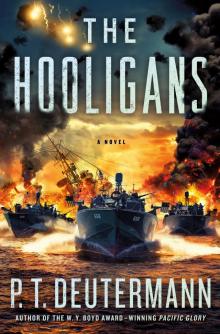 The Hooligans
The Hooligans SPIDER MOUNTAIN
SPIDER MOUNTAIN![Cold Frame [retail] Read online](http://i1.bookreadfree.com/i/03/19/cold_frame_retail_preview.jpg) Cold Frame [retail]
Cold Frame [retail] Sweepers
Sweepers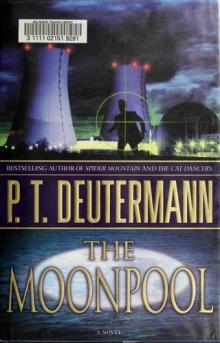 Cam - 03 - The Moonpool
Cam - 03 - The Moonpool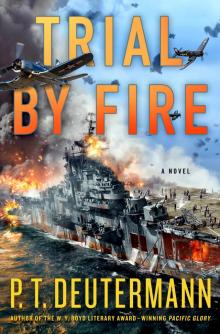 Trial by Fire
Trial by Fire Cold Frame
Cold Frame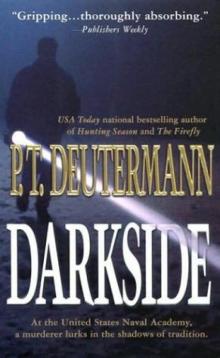 Darkside
Darkside Cam - 04 - Nightwalkers
Cam - 04 - Nightwalkers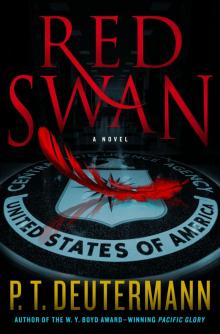 Red Swan
Red Swan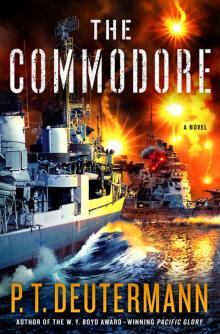 The Commodore
The Commodore Hunting Season
Hunting Season The Cat Dancers
The Cat Dancers Scorpion in the Sea
Scorpion in the Sea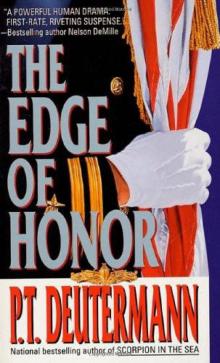 The Edge of Honor
The Edge of Honor The Cat Dancers cr-1
The Cat Dancers cr-1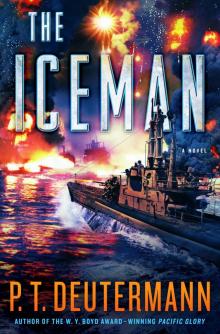 The Iceman
The Iceman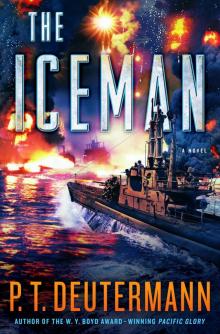 The Iceman_A Novel
The Iceman_A Novel Official Privilege
Official Privilege Sentinels of Fire
Sentinels of Fire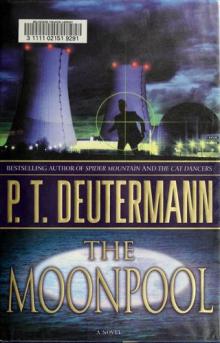 The Moonpool cr-3
The Moonpool cr-3 Nightwalkers cr-4
Nightwalkers cr-4 The Firefly
The Firefly Spider mountain cr-2
Spider mountain cr-2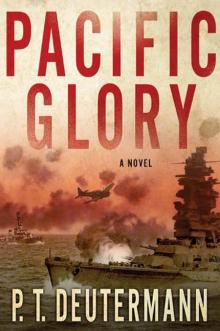 Pacific Glory
Pacific Glory The Last Man
The Last Man